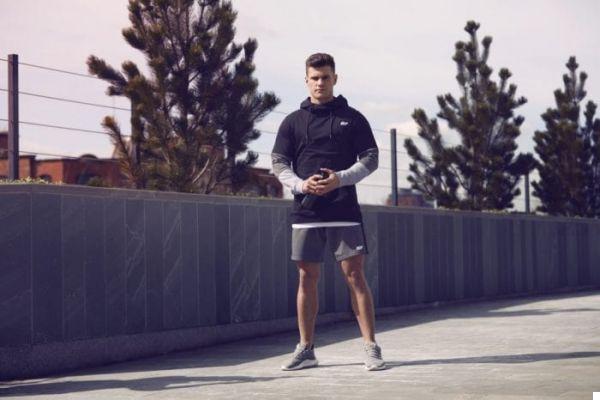Combine calisthenics and weight training
Often we end up in some sort of clash between bodyweight training and dumbbell and barbell training. This rivalry should not exist as these two types of training must not be opposed but complementary. Bodyweight training offers advantages and disadvantages as does weight training.
The solution is to take advantage of these features to make the most of your training and ultimately direct the greatest amount of effort towards your personal goals.
The advantage of weight training is certainly that it is simpler both in terms of motor patterns and progression. For example, a military press movement is certainly easier to perform than a full hand stand push up (full ROM vertical push-ups) as well as the progression, in the first case, is limited to adding weight on the barbell.

In the second case, correct execution depends on many other factors and it is much more difficult to isolate the movement to a certain muscle district. This means that gains in strength and muscle mass can be achieved more easily.
On the other hand, free body exercises give unique satisfactions: knowing how to fully manage your body and even perform unthinkable movements gives great satisfaction; also these exercises
they can be performed anywhere, it is something that always accompanies us.
Two training styles are proposed below, one focused on calisthenics and the other on weightlifting.
Bodyweight exercises to support the weights
Bodyweight exercises allow you to obtain benefits that weights cannot give. If you want to learn how to create tension throughout your body, you need to train with your body. moreover, the closed kinetic chain movement represents a different stimulus for the muscles.
In the event that the goal of your training is to progress in the weight room, bodyweight exercises can be a valid help. These exercises must meet criteria:
- The limiting factor must be the muscle component, not balance or mobility
- The movement pattern must reflect the movement you want to progress on
An example could be the following: if you want to progress in the military press (slow forward) you cannot think of using a 90 deg pushup as a complementary exercise, even if the shoulder muscles are heavily involved. This is because exercise requires good mobility which requires dedicated work to be achieved. A hand stand push up is not a good choice either because the limiting factor becomes the balance rather than the strength of the pushing muscles.

A good complementary exercise would be hand stand push ups against the wall, with the abdomen facing the wall. Movement reflects the military press well, balance is not the limiting factor and the required mobility is not much.
This concept applies to core exercises such as bench press, rowing, and other open kinetic chain exercises. In the case of leg training, the importance of explosive training should not be underestimated. For example, if you want to progress in the squat a good idea could be the vertical jump.
Weight training to support calisthenics
Most of the medium and high intensity skills require a lot of specific strength and mastery of execution. For example, to perform a full hand stand push up you need to be able to maintain balance throughout the entire movement.
This mastery takes practice and practice and more practice. But weight training also has its value in calisthenics. developed muscles allow you to express greater strength and perform more complex movements with your body, as well as having a more satisfying physique.
Weight training is aimed more at peripheral muscles such as arms and shoulders. It is also a good idea to keep performing basic movements like military press, bench press, deadlift, squat and lunges.

A simple example would be to insert 3 or 4 sets for biceps, triceps and shoulders at the end of each calisthenics style training session; shouldn't this take more than 15? 20 additional minutes. In addition, it would be advisable to dedicate two days to training the legs, in order to allow the muscles of the trunk and arms to recover from the workouts.
Finally, dedicate a day to the fundamental movements with weights and, perhaps, dedicate 20 minutes at the end of the session to perform the progression of the skills you are training.
An example would be to do a session starting with military press, clean, weighted pull-up, weighted dip, rowing and finish with 10 minutes of straddle planche isometries and 10 minutes.
di isomentrie in front lever straddle.


























